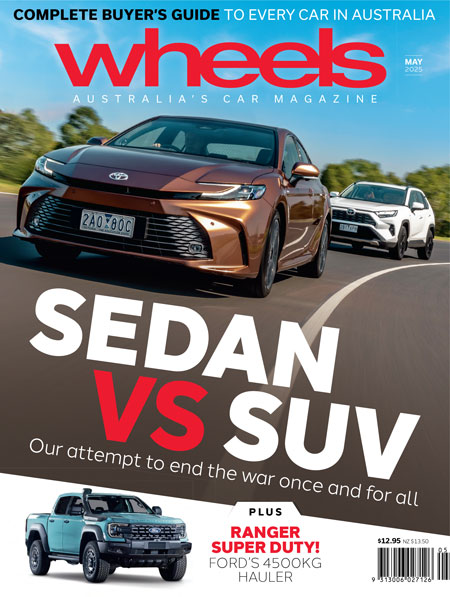There’s a scene in the movie Bullitt when the actors say nothing for about 10 minutes. Instead, as a Ford Mustang and Dodge Charger terrorise San Francisco’s streets in chase of each other, big V8s fill the dialogue. There’s no music, just bellowing engines and screeching tyres to hold your attention, as many argue, better than any other car chase scene in history.
Over the years, Ford’s built three special Mustangs in tribute to Detective Frank Bullitt’s (played by Steve McQueen) iconic 1968 Mustang GT from the scene. First in 2001, again in ’09, then in 2018 to mark 50 years since the film’s release. Named Mustang Bullitt, the latest one is the first to be sold in Australia.

Sure, you could call this comparison pointless when our 700-strong allocation is virtually sold out. But when its $73,680 price lands within only a couple grand of the Chrysler 300 SRT, our inner movie buff is screaming for a showdown. After all, the 300 SRT can claim family relations to the scene’s menacing 1968 Dodge Charger R/T 440.
Besides both cars being built by Chrysler, now known as FCA, the Dodge Charger was revived in 2016 with four-doors to avoid stealing Challenger sales. As a result, it shares the 300 SRT’s same platform and pushrod Hemi 6.4-litre V8 that punches out 350kW at 6150rpm and 637Nm at 4250rpm.
The 300 injects FCA’s presence into right-hand drive markets where the left-hand drive Charger and Challenger miss out. And although sales remain small in Australia, it survives here because our local four-door V8s gifted it an uncontested segment when they were axed.
Sales did peak, despite its architecture dating back to 2005, when it was revamped in 2014 with a new face, bum and interior. The update also introduced the Core, a budget version with static dampers and a downgraded equipment list, but we think the 300 is best enjoyed like a burger – with the lot.
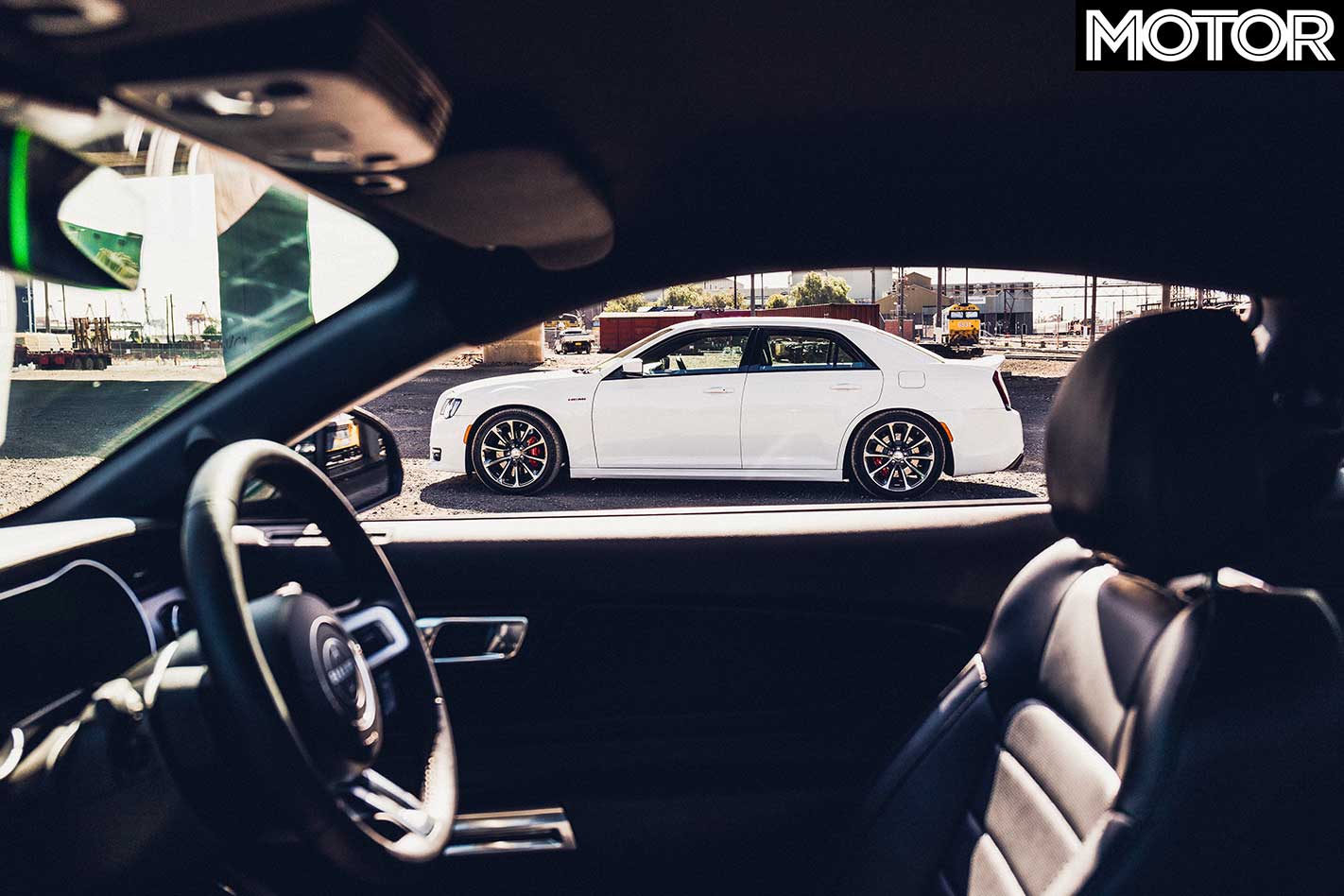
That clearly was the brief at Ford on the Bullitt. Inside some things ham-up the tribute; ‘Bullitt’ is written on the side-sills, steering horn and a numbered dash plaque. Meanwhile, its digital cluster and cup holder LEDs glow green, matching the Recaro’s seat stitching.
But there are other, more genuine, nods to the movie icon, like that white cue-ball knob atop its six-speed manual transmission. Or, the way the seat pads are partitioned. Its front grilles are bare. The top grille and the glasshouse are framed in chrome, while special ‘Torq-thrust’ wheels and a single Bullitt badge, placed where the regular ‘GT’ one was on the boot, complete the transformation.
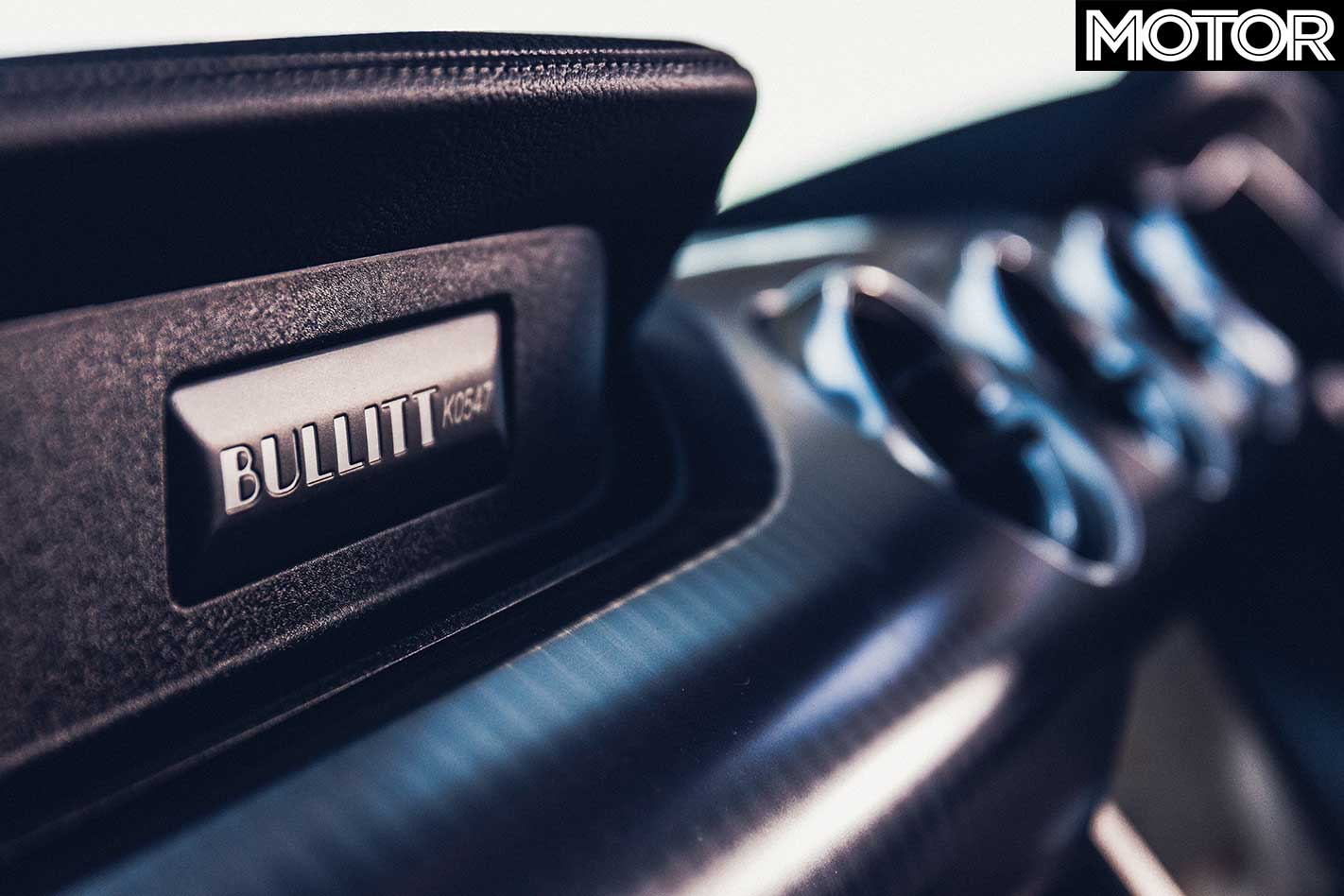
All these small changes add to one serious statement. The Bullitt is a stealthy, brooding thing. Intimidating, even. And to help justify its $10K premium over a base manual GT, its 5.0-litre V8 also breathes through a larger 87mm throttle body (compared to 80mm) and cold-air intake, boosting power by 6kW to 345kW/556Nm. Otherwise, it’s mechanically identical to a regular Mustang GT.
It’s unlikely 6kW could significantly quicken the Mustang’s gallop, with Victoria’s end-of-summer heat threatening to turn Heathcote Raceway into a cooking pan, we roll through its gates even more sceptical.
Being manual only, the launch technique demands experimentation. Normally, revs are limited to 4000rpm with the clutch in, even with traction control and ESP switched off. Sport Plus mode allows more revs and dropping 5000rpm on rear Michelin Pilot Sport 4 S tyres will spin them nicely. But, it only reaps a 5.7sec sprint to 100km/h and 13.7sec sprint across the 400m strip.
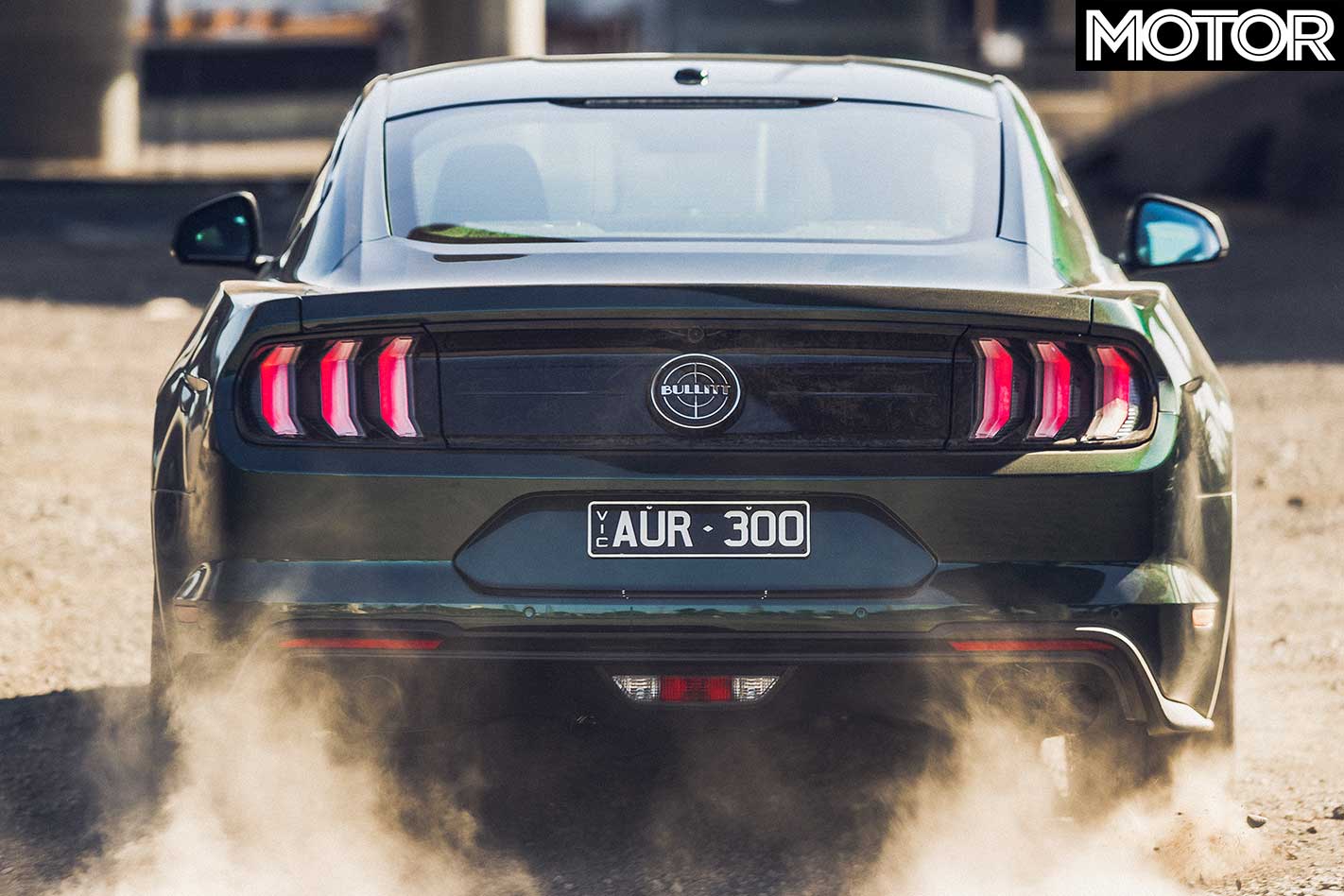
It takes a while to nail a good upshift. Manual Mustangs spin to a higher 7500rpm cut-out than the 10-speed automatic powertrain, even though redline is marked at 7400rpm like the auto. It makes timing the shift perfectly, even with a warning light, incredibly hard, especially since the revs build so quick in the upper ranges.
Drag Mode, though, clearly helps. Suddenly, like a sprinter on the starting blocks, muscles tensed, the car’s systems are focused on delivering maximum acceleration. The rear dampers soften so its weight pushes down on the rear and the safety systems optimise traction. Even with a relatively low-rpm launch from 3700rpm, its 0-100km/h time drops to 5.34sec and its 0-400m sprint falls to 13.34sec.
That’s a tenth slower than what we extracted from a regular manual GT and the hot temps are sabotaging its potential. We’re seeing 30 degrees Celsius on its dash. The first 2018 manual GT we ever tested crossed the line 3km/h higher and a tenth faster than our Bullitt, but it was in 11 degrees ambient.
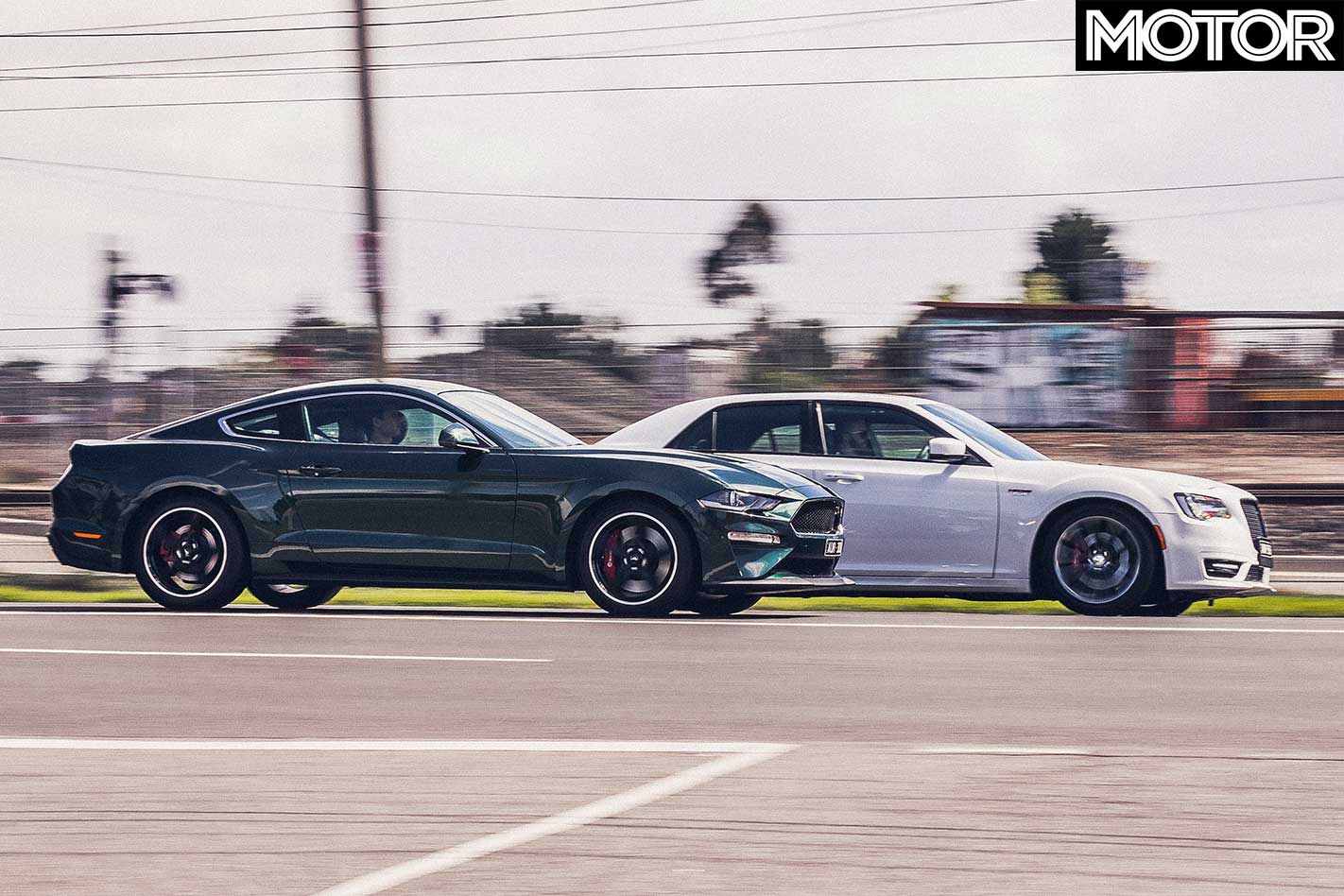
However, cold air would not save the Mustang Bullitt from ridiculously long new gear ratios. First is geared to 87km/h, second to 134km/h and third to 198km/h. So even though it packs another 39kW and 36Nm, the outputs are nowhere near enough to leverage these wide spreads.
There are plenty of ways to launch the SRT, but only one way to nail it. For instance, you must leave ESP on to engage launch control. Full throttle on the brake jumps the revs to 2000rpm, which then slowly build to a pre-set figure with, what feels like, a stall function. Lift the brake, and it unleashes the Hemi’s hell on its skinny rear Goodyears.
The SRT’s eight-speed transmission belts through much shorter ratios. It can kiss 96km/h in second gear if you let it run to its 6750rpm cut in manual mode. But there’s no real point. Left to shift on its own, it slots into third at 85km/h instead, or 6000rpm, so revs spend more time in the mid-range.
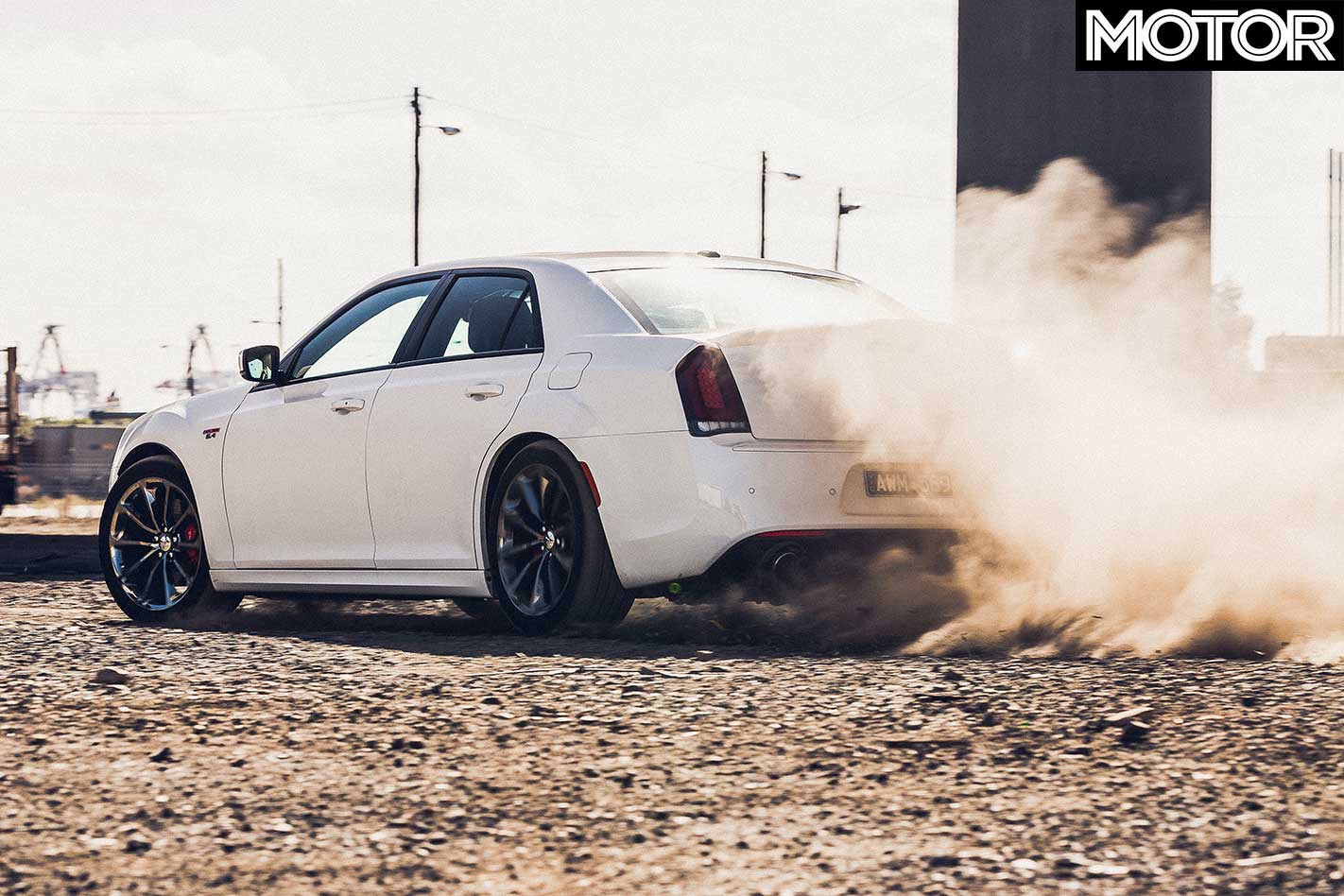
It’s slow, on today’s surface, until we try a much smoother launch sequence. With its damping set to Street in a configurable drive mode, its traction control and transmission set to their most aggressive mode, Track, and some throttle built against a soft brake, we ease away at 1500rpm.
As soon as it gains some speed, we sink the loud pedal. From rest, it hits 100km/h in 4.83sec and blitzes the finish line in 12.97sec. Again, trap speeds are disappointing, with 176km/h revealing even a bulletproof V8 feels the heat.
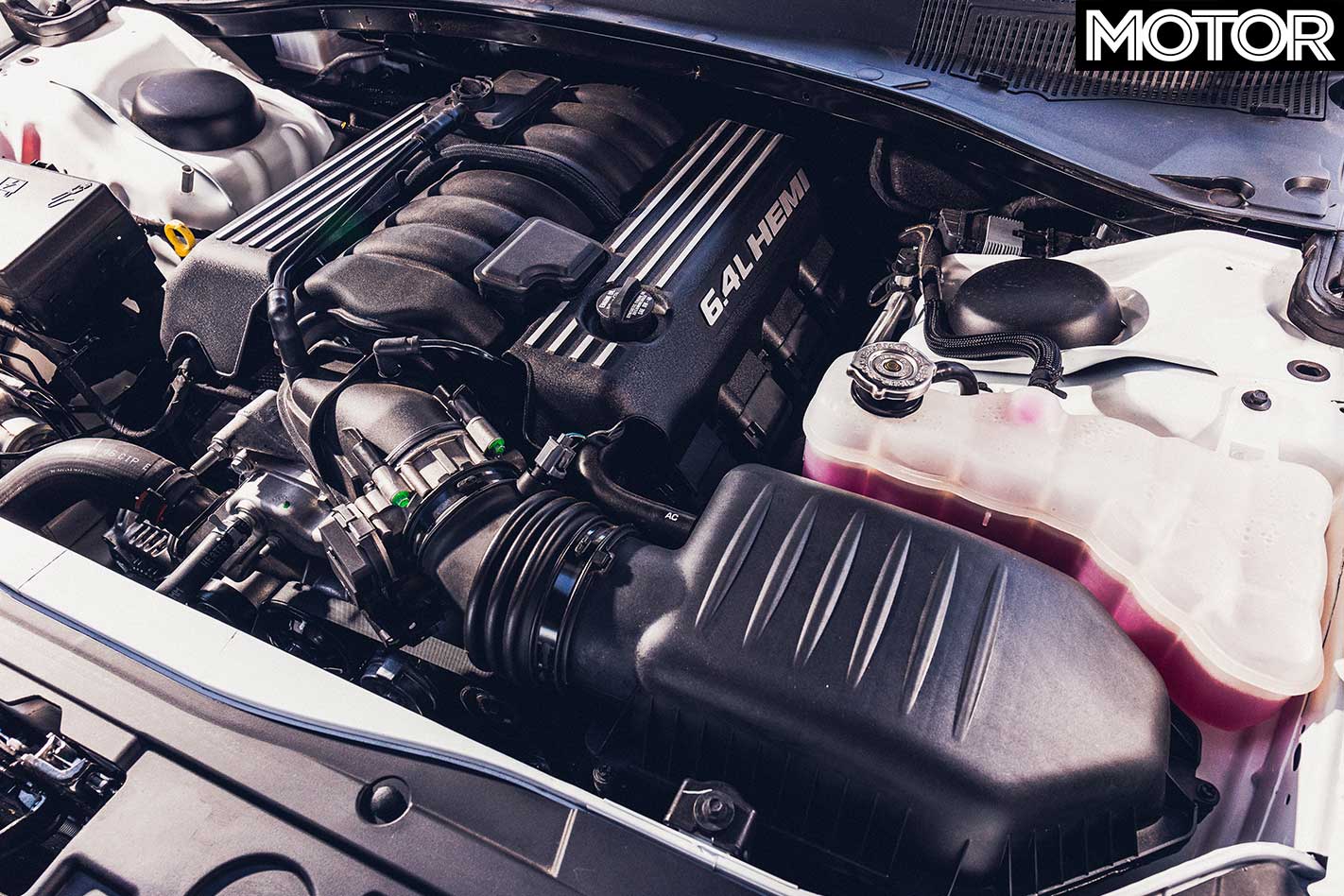
Not that you could tell from the sound it makes. The 6.4-litre V8 thunders like a Supercar racer as it rips through the atmosphere, gulping air to fill its 103.9mm wide cylinders. It then blasts a deep rumble out its exhaust, punctuating the climb to a strong top-end with a burp on every upshift. With only a 94.5mm stroke attached to its big cylinders, the SRT can rev, and instead feels most energetic above 3500rpm.
Even though the Mustang rows longer gears, and its DOHC 5.0-litre V8 is almost square in bore and stroke, it builds engine speed with relentless pace. The delivery is racecar-like and clearly helped by cutting-edge tech like plasma-coated bores.
But there’s also the noise, which is good enough to justify a Bullitt sequel. That exposed air filter gives its intake roar a hard-edge, like a Shelby GT350R. And as well as the thunder exploding from its active exhaust, there’s a deep throbbing engine noise that the SRT lacks.
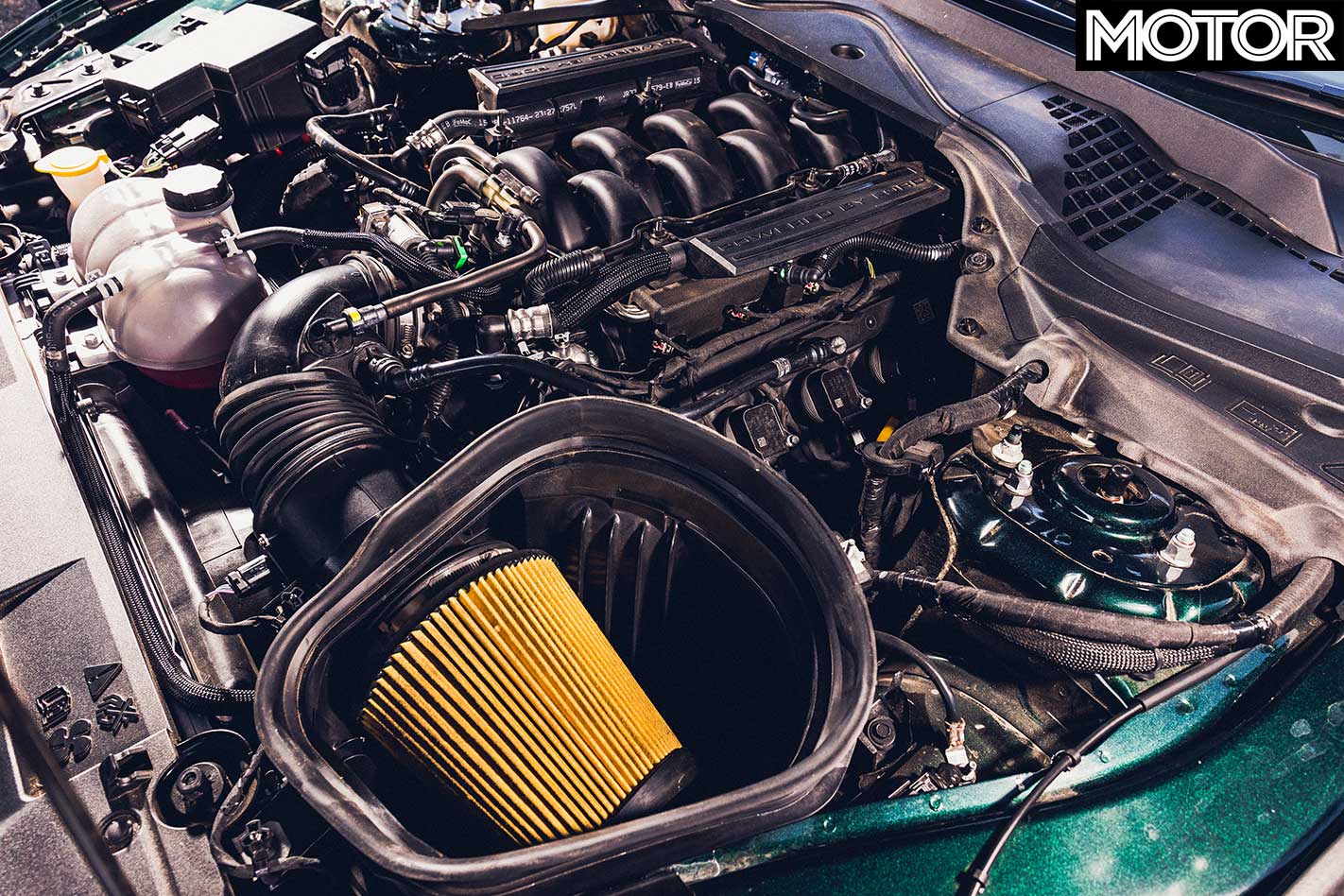
Ford’s equips adaptive suspension on all Bullitts, so on top of uprated dampers, bigger swaybars, revised rear toe-links and Michelins, it has bigger front bearings and inverted front struts. As a result, it tries hard to handle like a sportscar, holding the road with barnacle-like grip and darting into corners as soon as you point the steering off-centre. But it never feels truly planted. Or, delivers the steering feedback you need to push as hard as you want.
Still, it makes an easy target of the 300 SRT. Yes, the big thing is okay to drive. The steering wriggles in your palms with some feedback, the brakes are firm and the throttle is responsive, but you can always sense its size. Roll, squat and dive always threaten to creep in and the whole thing feels inert.
Its size reveals the true problem. Compared to the Mustang, it’s 277mm longer in length, 332mm longer in wheelbase and 233kg heavier. Since it’s weighed with virtually an empty 70 litre tank, its true kerb weight is even more. And yet, Chrysler places this mass on 245mm-wide tyres at all corners.
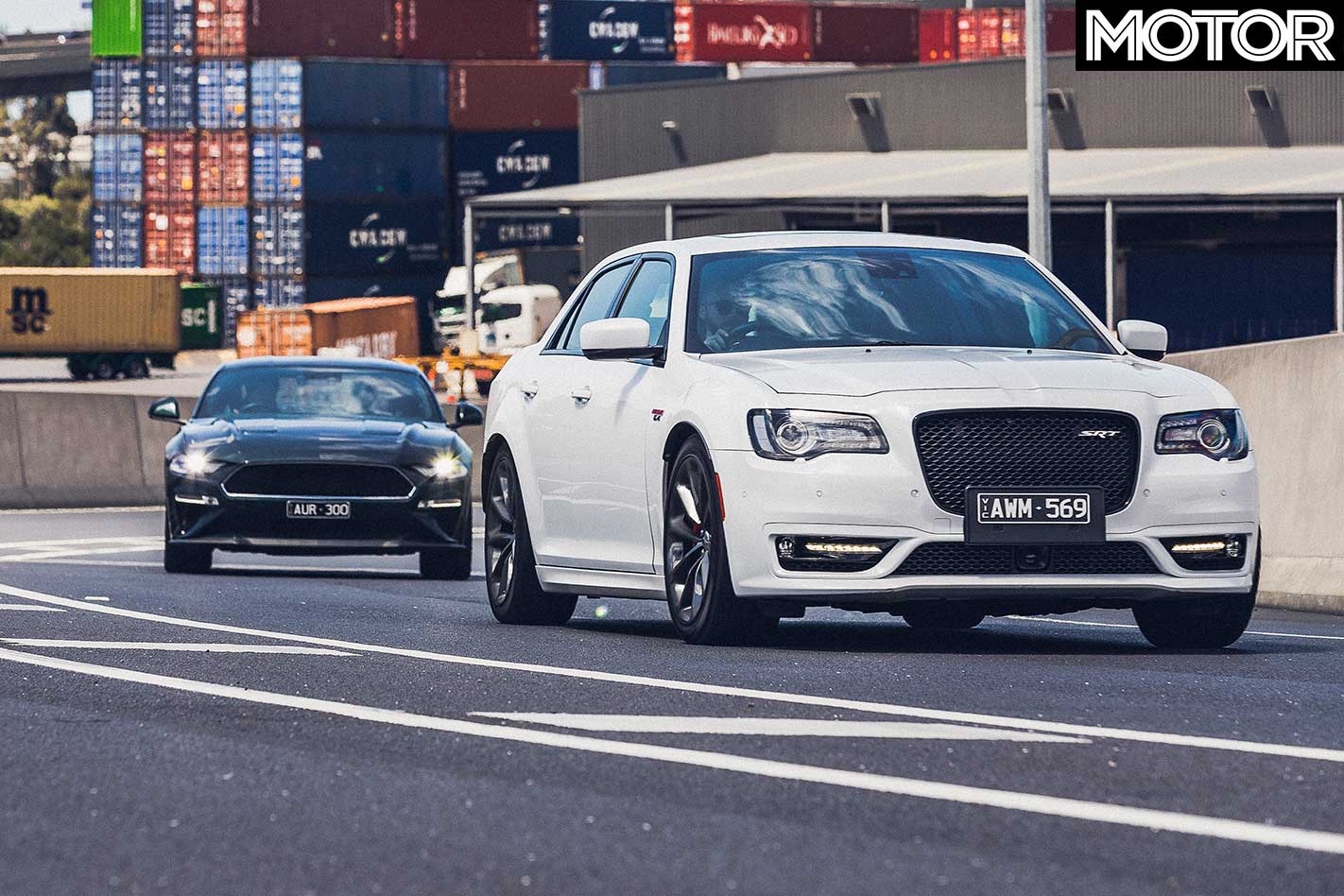
Clearly, when FCA updates the SRT, a lighter platform and staggered wheel widths would help, but for now, there’s still plenty to like. It’s ridiculously easy to oversteer. It’s undergripped, and its wheelbase gives you plenty of time to react. Yes, the steering’s a little slow coming off lock, and the stability control could allow a touch more latitude in Track, but otherwise it’s a big, friendly boofhead.
This easy-going nature translates to its ride, as well. Track damping is too stiff, obviously, whereas Comfort struggles to control its mass. Sport strikes a good balance and soaks up bad roads without insulating you too much.
The Mustang’s ride is okay in comparison, but its huge 19-inch tyres often thump into potholes and over bumps. Meanwhile, the lingering float in the setup never pays off with a cushioned ride. At least it’s the better place to sit, where you’re hugged by Recaros and stare at that digital cluster.
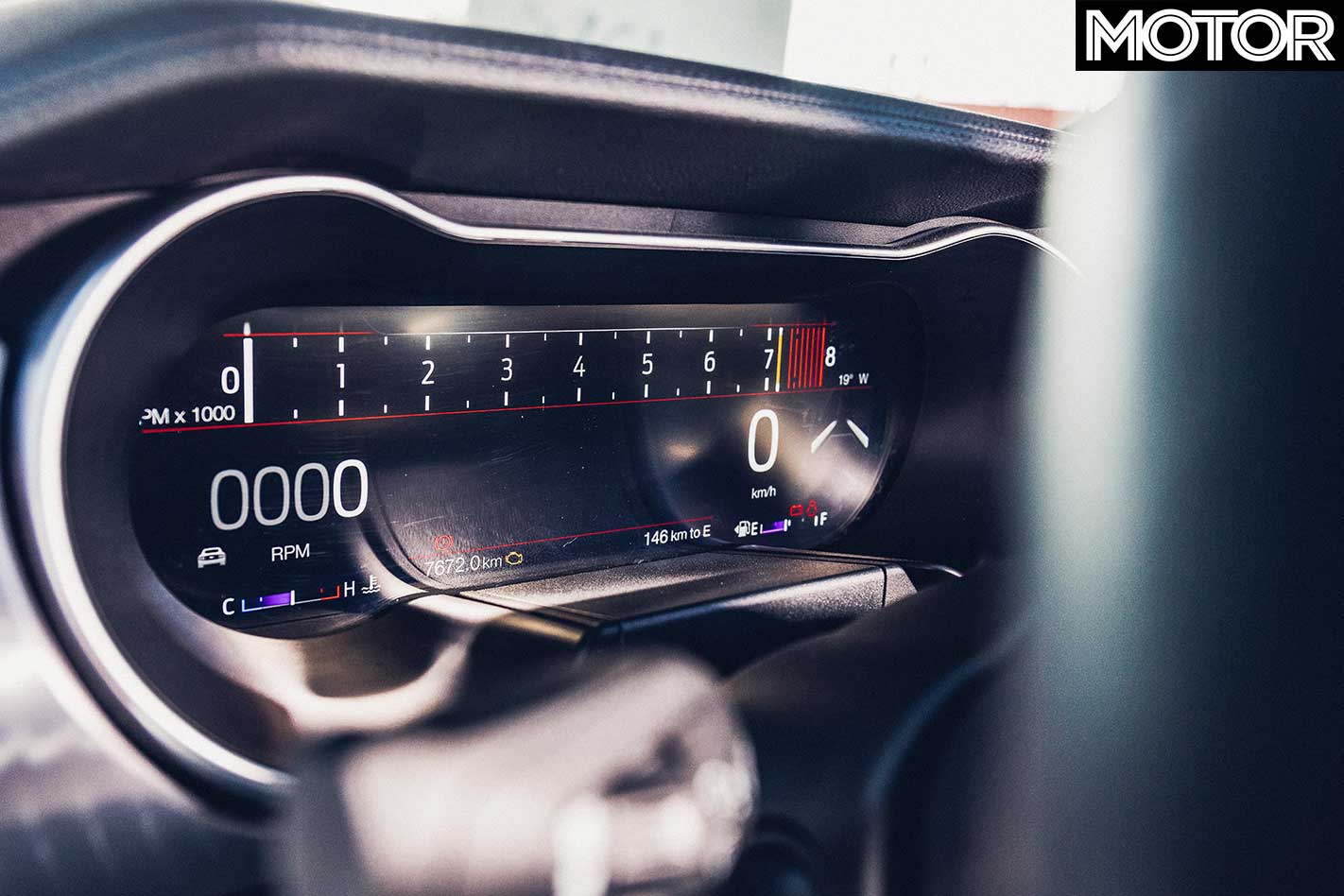
The Chrysler, by comparison, has big, comfy Alcantara-trimmed seats that lack bolster or meaningful support for hard driving. Its footwell, too, is cramped by a foot brake, and operating its rotary dial gear selector is clunky at the best of times, dangerous at the worst of them.
Clearly, each car’s strengths play to their purpose. The Chrysler is a big people hauler with a very limited skill set. But what it does get right, makes it charming. Its rear-end is so easy to smear across the road and its powertrain is refreshingly old-school, yet potent. It looks good for an old rig, and it’s comfortable to punt around.
The Mustang Bullitt had to look, feel and drive like a movie star. Luckily, it already did. From its Dark Highland Green paint, to its wheels, it’s instead an excellent tribute, where its character equals more than the sum of its parts.
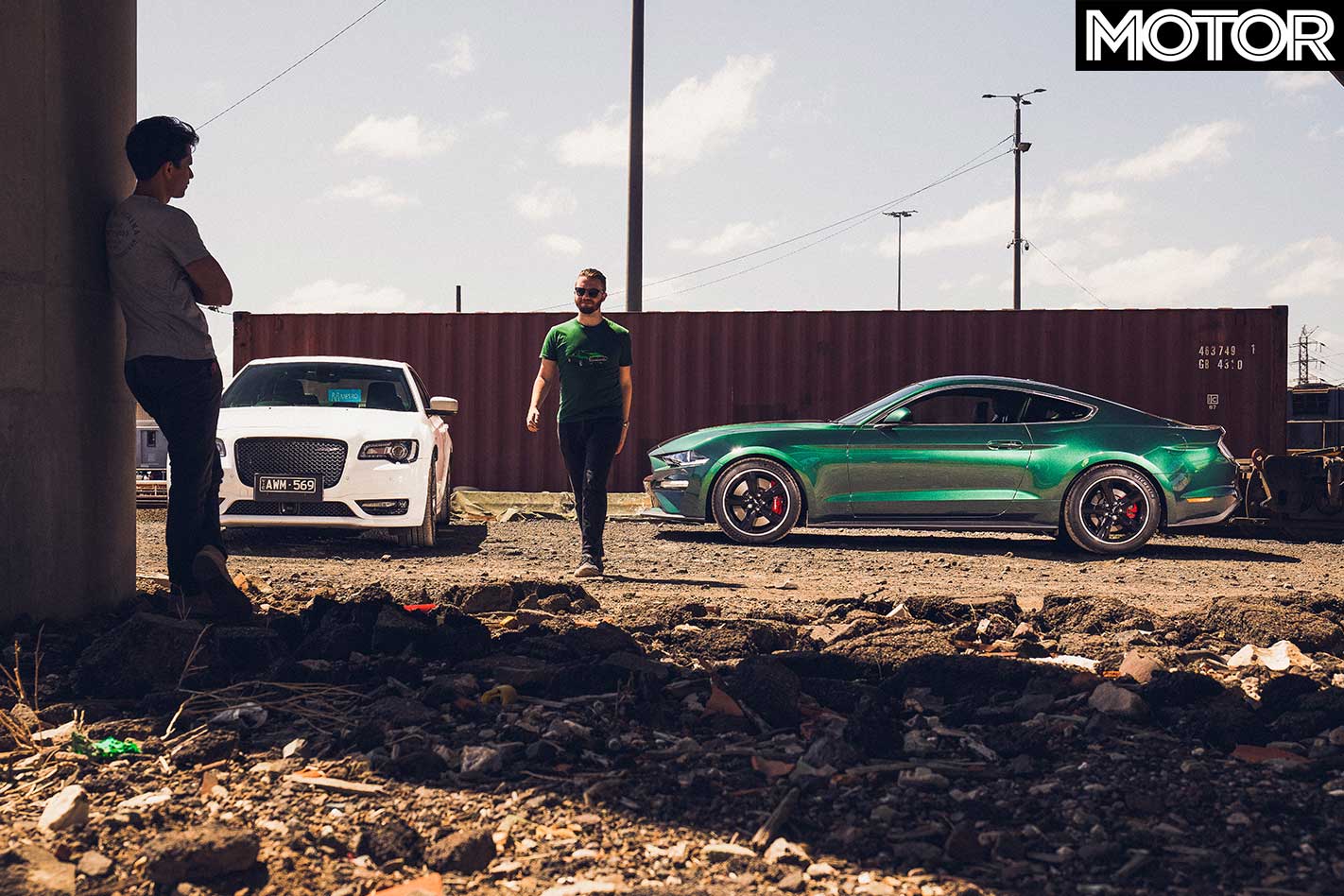
These two might work different sides of the street, but they find middle ground as muscle cars. The Chrysler leads the chase as the big, lazy skid-friendly V8. It’s quicker in a straight line, thanks to an automatic, but the Mustang, with its lighter side-step and free-revving engine, hunts it down with pace. Considering the Mustang is more capable at grand touring than the Chrysler is at being a sports car, and the winner is obvious. Ford’s Mustang Bullitt is a star. It’s only a shame that they’re probably all spoken for.
Fast Facts

| u00a0 | Chrysler 300 SRT | Ford Mustang Bullitt |
| Body | 4-door, 5-seat sedan | 2-door, 4-seat coupe |
| Drive | rear-wheel | |
| Engine | 6417cc V8, OHV, 16v | 5038cc V8, DOHC, 32v |
| Bore x Stroke | 103.9 x 94.5mm | 93 x 92.7mm |
| Compression | 9.6:1 | 12.0:1 |
| Power | 350kW @ 6150rpm | 345kW @ 6000rpm |
| Torque | 637Nm @ 4250rpm | 556Nm @ 4800rpm |
| Power/Weight | 178kW/tonne (tare) | 199kW/tonne |
| Transmission | 8-speed automatic | 6-speed manual |
| Weight (dry) | 1965kg (tare) | 1732kg |
| Suspension (f) | links, coil springs, adaptive dampers, anti-roll bar | struts, coil springs, adaptive dampers, anti-roll bar |
| Suspension (r) | multi-links, coil springs, adaptive dampers, anti-roll bar | |
| L/W/h | 5066/1902/1478mm | 4789/1916/1396mm |
| Wheelbase | 3052mm | 2720mm |
| Tracks | 1621/1639mm (f/r) | 1582/1648mm (f/r) |
| Steering | electrically assisted rack-and-pinion | |
| Brakes (f) | 360mm ventilated discs, 4-piston calipers | 380mm ventilated discs, 6-piston calipers |
| Brakes (r) | 350mm ventilated discs, 4-piston calipers | 330mm ventilated discs, single-piston calipers |
| Wheels | 20.0 x 9.0-inch (f/r) | 19.0 x 9.0-inch (f); 19.0 x 9.5-inch (r) |
| Tyre Sizes | 245/45 R20 (f/r) | 255/40 R19 (f); 275/40 R19 (r) |
| Tyres | Goodyear Eagle F1 Supercar | Michelin Pilot Sport 4 S |
| Price | $74,990 | $73,688 |
| Pros | Driftability; still looks tough; metal for your money | Sound; exclusivity; exterior looks; pace; handling |
| Cons | Itu2019s getting on; handling; build quality issues | Steering feedback; shift feel; overly tall gearing |
| Rating | 3.5 out of 5 stars | 4 out of 5 stars |
The Strip

| u00a0 | Ford Mustang Bullitt | Chrysler 300 SRT | |
| 0-10km/h | 0.43sec | 0.35sec | |
| 0-20km/h | 0.98sec | 0.78sec | |
| 0-30km/h | 1.46sec | 1.20sec | |
| 0-40km/h | 1.95sec | 1.59sec | |
| 0-50km/h | 2.37sec | 2.02sec | |
| 0-60km/h | 2.76sec | 2.44sec | |
| 0-70km/h | 3.27sec | 2.93sec | |
| 0-80km/h | 4.04sec | 3.49sec | |
| 0-90km/h | 4.64sec | 4.10sec | |
| 0-100km/h | 5.34sec | 4.83sec | |
| 0-110km/h | 6.05sec | 5.59sec | |
| 0-120km/h | 6.78sec | 6.41sec | |
| 0-130km/h | 7.79sec | 7.23sec | |
| 0-140km/h | 8.84sec | 8.23sec | |
| 0-150km/h | 9.89sec | 9.29sec | |
| 0-160km/h | 10.93sec | 10.50sec | |
| 0-170km/h | 12.10sec | 11.93sec | |
| 0-400m | 13.34sec @ 179.96km/h | 12.97sec @ 176.97km/h | |
| 80-120km/h (Drive) | 2.70sec | 2.88sec | |
| 100-0km/h | 33.75m | 33.57m | |
| Speed in Gears | |||
| 1st | 87km/h @ 7500rpm | 64km/h @ 6750rpm | |
| 2nd | 134km/h @ 7500rpm | 96km/h @ 6750rpm | |
| 3rd | 198km/h @ 7500rpm | 143km/h @ 6750rpm | |
| 4th | 249km/h @ 6675rpm* | 180km/h @ 6750rpm | |
| 5th | 249km/h @ 5900rpm* | 234km/h @ 6750rpm* | |
| 6th | 249km/h @ 4525rpm* | 282km/h @ 6350rpm* | |
| 7th | N/A | 282km/h @ 5325rpm* | |
| 8th | N/A | 282km/h @ 4250rpm* | |
Heathcote Raceway, 30˚C, dry. Driver: Louis Cordony/Scott Newman *Manufacturer’s claim Official timing supplier – VBOX Australia



